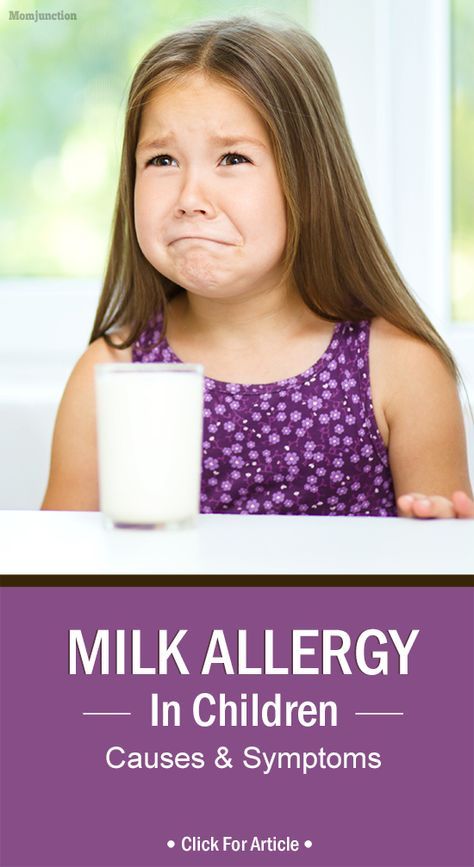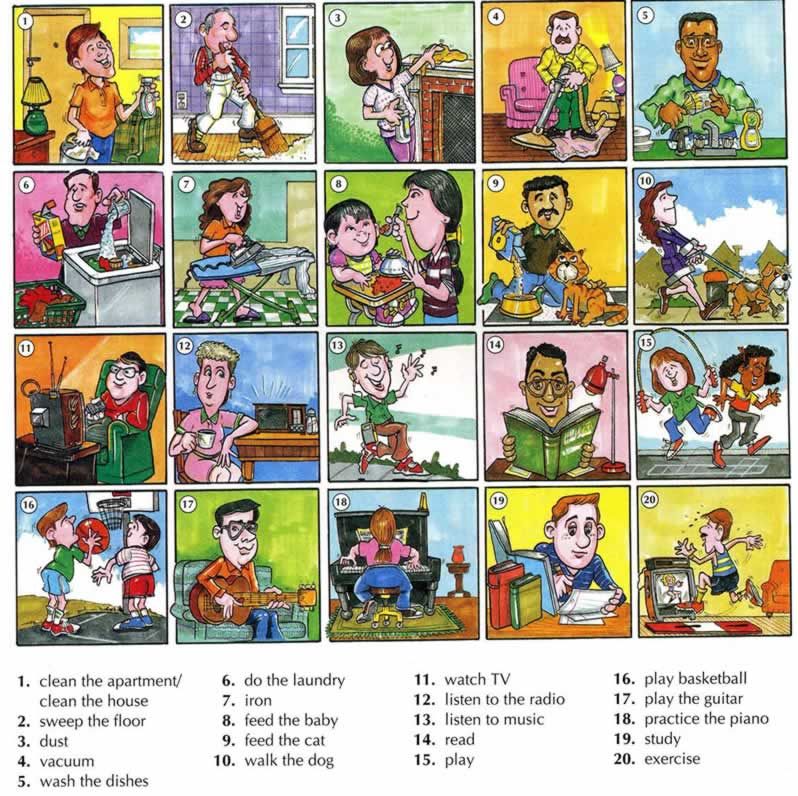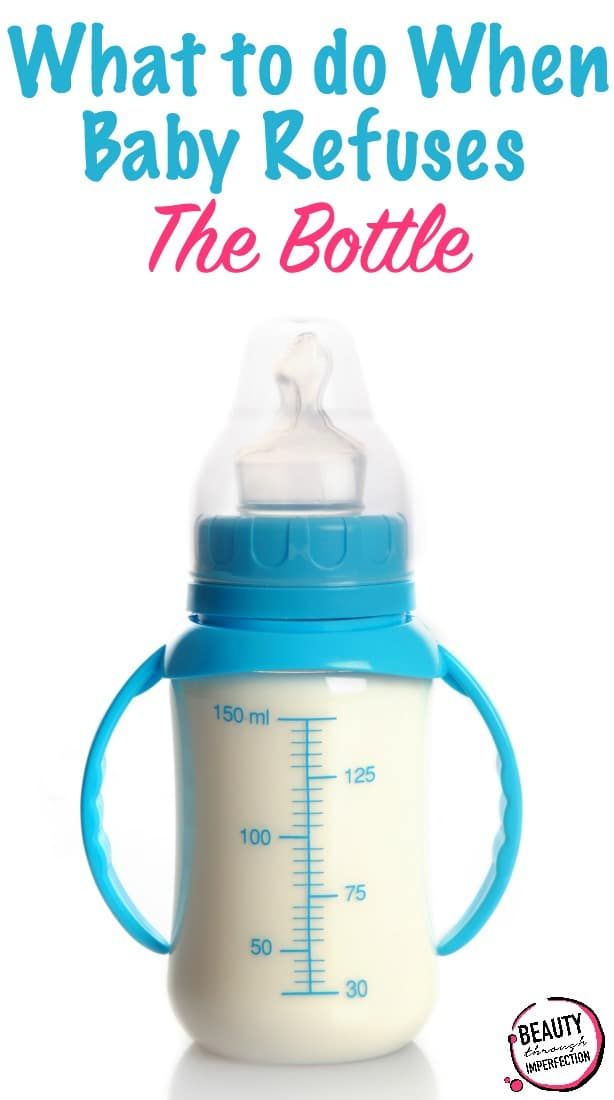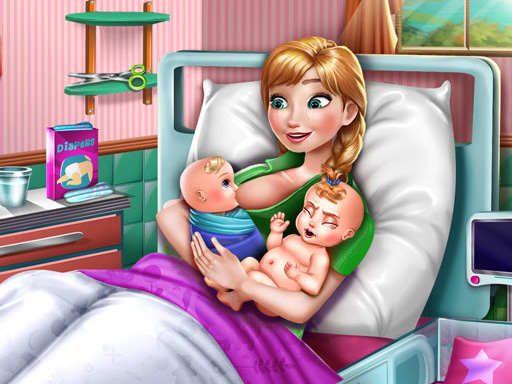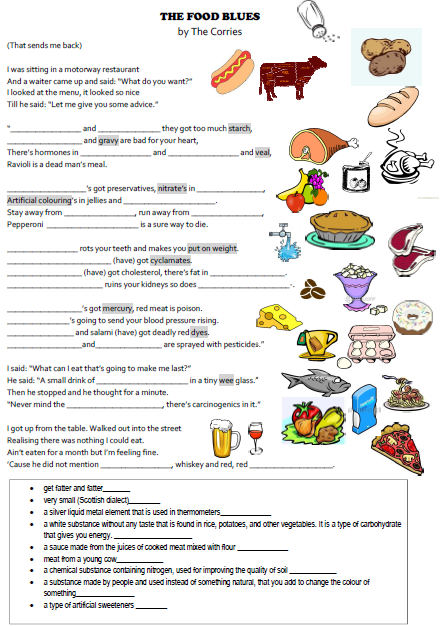Food intolerance rash baby
Baby Food Allergies & Intolerances | How They Work
Food allergies seem to be in the news more and more these days, and according to Allergy UK, 20% of all adults in the UK have one. It's an important thing to be aware of, particularly when you start to wean your little one. Here are a few myth busters and all the information you need to sort the fact from the fiction so you can reduce the risks for your baby.
What is a food allergy
Food allergies occur when our immune systems react negatively to proteins found in certain foods. It can cause some pretty unpleasant symptoms such as abdominal pain, vomiting, and diarrhoea. If your baby has a food allergy, it might also give them a runny nose or a cough. They might develop an itchy skin or rash, swollen lips and throat and possibly wheezing and shortness of breath.
You should be able to reduce your baby's risk of developing allergies by waiting until around six months before introducing your baby to solid food. Breastfeeding for the first six months can really help protect your baby. When you start introducing solid foods, you can include common food allergens in your baby’s diet. If you're unsure, ask your healthcare professional about food allergens and introducing your baby to solid foods.
Food allergy or food intolerance?
It can be very confusing working out whether it's a true allergy or just a food intolerance. True food allergy reactions typically happen pretty quickly after the particular foodstuff has been eaten and the reaction is a response of your baby’s immune system. Within hours or even minutes of eating, symptoms such as hives, pale skin, vomiting, diarrhoea and breathing problems can start. Reactions can happen even when a tiny amount of food is eaten. For some, even touching or inhaling the food can cause a reaction. The most common foods causing allergies in the UK are peanuts, tree nuts, cows’ milk, egg, wheat, soy, fish and shellfish.
Food intolerances tend to be reactions to foods inside the digestive system, and don’t involve the immune system.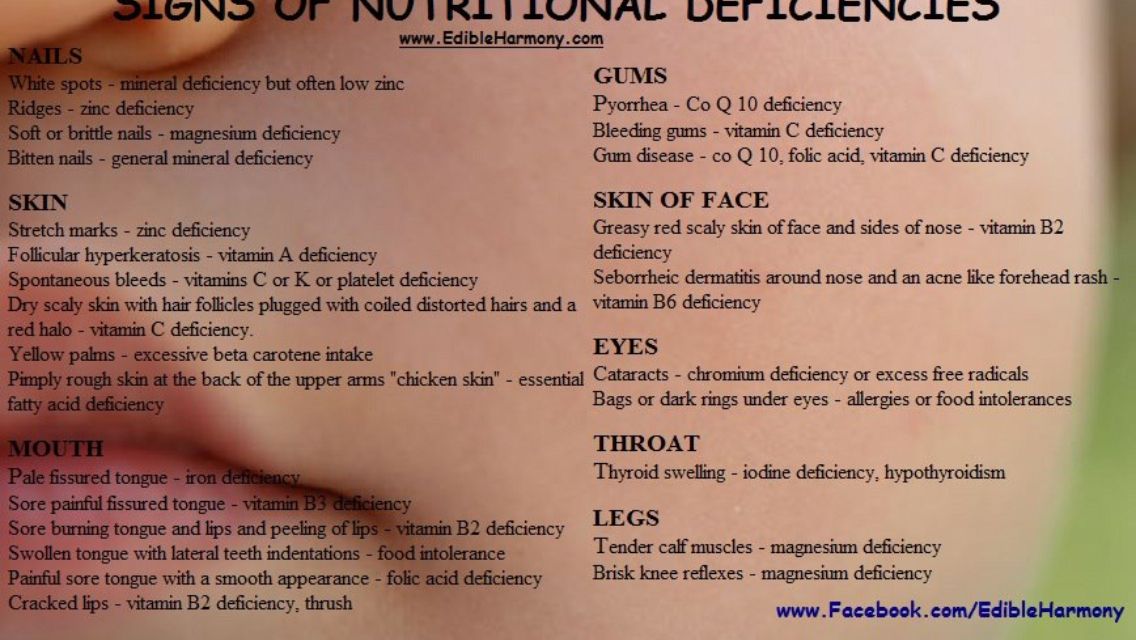 Lactose (the sugar in milk) intolerance is a common example of a food intolerance. Usually, small amounts of the problem food can be eaten before symptoms appear. They can be embarrassing as people often suffer from gas, stomach aches, bloating and diarrhoea.
Lactose (the sugar in milk) intolerance is a common example of a food intolerance. Usually, small amounts of the problem food can be eaten before symptoms appear. They can be embarrassing as people often suffer from gas, stomach aches, bloating and diarrhoea.
The only sure way to know if your baby is experiencing a food allergy is to talk with your GP and discuss your concerns.
How babies develop food allergies
As mums and dads, you want to do everything you can to keep your baby safe, so knowing about food allergies is an important part of doing just that.
Also, because babies' digestive systems are still developing every day, food allergies are more common in infants than in other age groups. Some children may outgrow their food allergy, however the likelihood of this will depend on the type of food allergy as well as the severity of the allergy. If your baby does develop a food allergy, it is advisable to work with a healthcare professional who specialises in childhood allergies, as they will be able to help you manage the food allergy as well as monitor it over time.
How it works
A food allergy will develop when a baby's immune system becomes "sensitised" to an allergen or protein in a particular food. It can happen the first time a baby eats the food, but it can also come later too.
Once sensitised, the baby's body will make antibodies—little proteins that "lock" onto foreign invaders—so they are ready to react to that food the next time it's eaten.
These antibodies then trigger immune cells to make histamine, a chemical that causes allergy symptoms—such as a rash, wheezing, diarrhoea, etc.
Feeding choices may help lower your baby’s chances of developing a food allergy. That is why experts recommend you only give your baby breastmilk for the first 6 months of life and waiting to around 6 months of age before starting with appropriate solid foods.
Atopic dermatitis
Atopic dermatitis (AD) is the most common symptom of a food allergy. It is a type of skin rash or eczema that might appear on your baby's face, scalp, limbs and knees.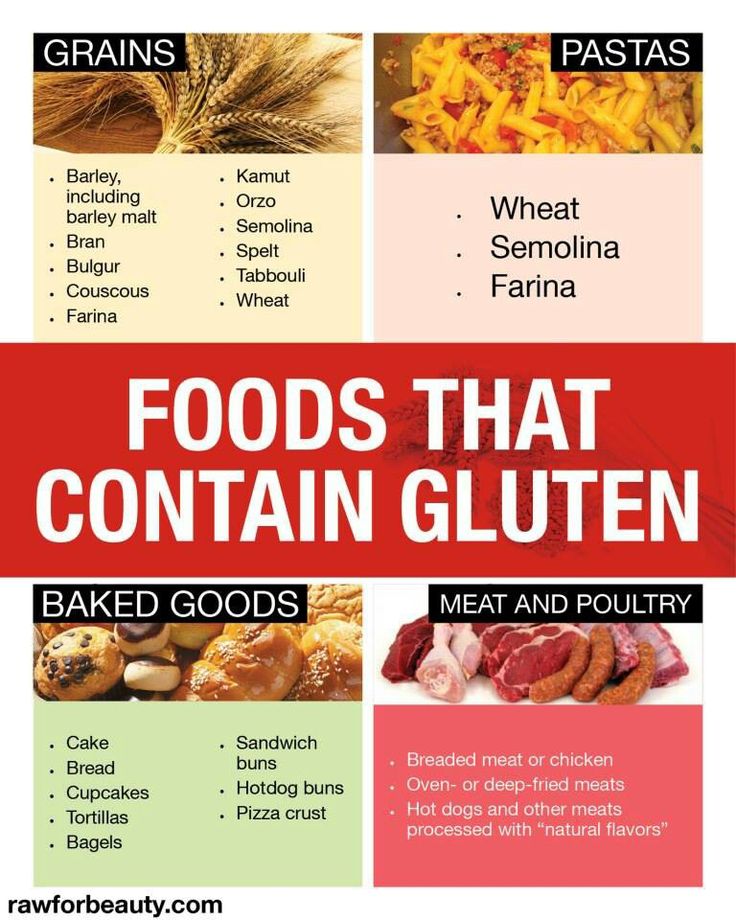 The number of infants with AD has increased over the past 30 years, and nearly 1 in 5 infants will develop AD by the time they are six months old. While any baby can develop AD, if you or their siblings have ever had symptoms of allergies such as hay fever, asthma or AD, or if you or their siblings have diagnosed food allergies, then they may be more likely to get it themselves.
The number of infants with AD has increased over the past 30 years, and nearly 1 in 5 infants will develop AD by the time they are six months old. While any baby can develop AD, if you or their siblings have ever had symptoms of allergies such as hay fever, asthma or AD, or if you or their siblings have diagnosed food allergies, then they may be more likely to get it themselves.
Cow's milk protein allergy
Cow's milk protein allergy affects around 1 in 40 children in the UK. As always, if you think your baby may have a food allergy or you have any concerns or worries, talk to your doctor as soon as possible to see if allergy testing might be a good idea.
Introducing common food allergies into your baby’s diet
Introducing common food allergens around six months is recommended. Foods that children are most commonly allergic to are milk, wheat, egg*, soy, peanut**, tree nuts, fish and shellfish. Exposing your little one to these foods early on can help reduce the chances of them becoming allergic. Reactions to foods can be common in babies, so knowing what to do and how to spot the signs is important.
Reactions to foods can be common in babies, so knowing what to do and how to spot the signs is important.
Here's some more info to help.
When to check with the doctor
If any of the following circumstances apply, it is especially important to have a chat with your Healthcare professional before introducing a common food allergen into your baby's diet.
-
Your baby has severe atopic dermatitis, an allergic skin rash, and it keeps coming back or is poorly controlled.
-
Your baby has reacted to other foods.
-
A sibling has a peanut allergy.
-
Your baby has a diagnosed food allergy.
-
You have a history of food allergies in your family.
Introducing foods with common allergens
Once your baby is six months old, don't avoid feeding them the common allergens (in an age-appropriate form). In fact, experts say you should include them in their diet before they turn one.
Introducing peanuts in an age appropriate form as part of their complementary feeding from six months onwards can prevent peanut allergies***. Just make sure you feed them in the right way based on your baby's age and development.
Here are a few more handy tips below
Tips on how to introduce common food allergies
-
Wait until your baby is already used to and accepts eating solid and other foods, such as infant cereal and baby food purees.
-
Try foods most likely to cause a reaction at home for the first few times you offer it, rather than at day care or when you're out and about. Watch your baby carefully each time you feed a common food allergen until tolerance is established.
-
Pick a time when your baby is feeling well, and you can devote your full attention for at least two hours so that you can watch for an allergic reaction.
-
Offer your baby a small amount of the new food, to begin with.
-
If your baby doesn't react, slowly increase the amount you offer them.

-
Offer one new food at a time. Wait about three days after feeding the new food before you introduce another. It will make it easier to pinpoint which food is causing the allergy if your little one reacts.
-
Follow advice from your doctor or healthcare professional about introducing new foods.
Allergy Symptoms
Signs of food allergy can show up minutes or hours after your baby's first bite, or your little one may not react until they have had the food a few times. That's why it's best to serve food allergens at home so you can keep an eye on them. If you see a reaction which gives you cause for concern, stop feeding them and call your doctor if you suspect an allergy.
Signs of a baby allergic reaction:
-
Their cry changes to become shrill or hoarse sounding
-
Persistent or excessive crying that only happens after eating certain foods
-
Vomiting
-
Diarrhoea
-
Runny nose, congestion, cough or sneezing
-
Skin irritations such as rashes and hives
-
For more severe reactions, such as difficulty breathing - dial 999.

We hope this information has been helpful. The chances are your baby will not have an allergy or react to the well-known allergens, but it's always good to be informed and ready.
And finally, enjoy weaning; it's a real milestone in your little one's life!
*Never feed raw or undercooked eggs to baby
**Whole Peanuts and tree nuts are a choking risk and should never be introduced to young children in their whole form. Peanut and nut butters are also a choking risk unless mixed with water to a very thin consistency. Until you have the okay from your baby's doctor due to the risk of aspiration; however, developmentally appropriate peanut-containing products may be introduced earlier.
*** The European Academy of Allergy and Clinical Immunology (EAACI) suggests introducing peanuts into the infant diet in an age-appropriate form as part of complementary feeding (most effective age from 6 mos) in order to prevent peanut allergy in infants and young children (moderate-certainty evidence).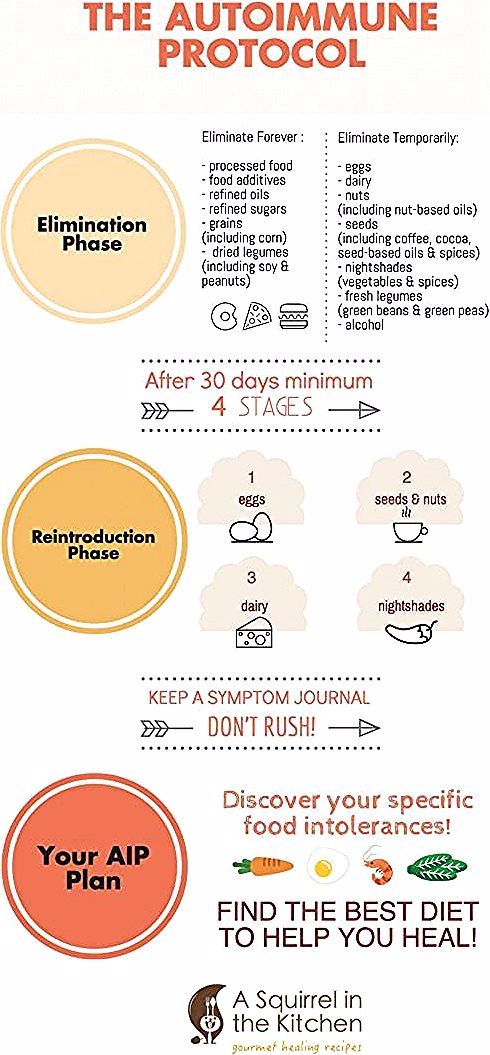
Does My Baby Have A Food Allergy Rash?
What is a food allergy rash, and what causes it? How do you know if your child has a food allergy rash? How to manage a food allergy rash, and how long does it usually last? We’ll cover everything families need to know about food allergy rashes in this definitive guide.
In our parent's guide to food allergy rashes, we'll answer the following most asked questions:
- What is a food allergy rash, and what causes it?
- How do you know if your child has a food allergy rash?
- What are the symptoms of a mild, moderate or severe allergic reaction?
- Where can food allergy rashes appear?
- How to manage a food allergy rash, and how long does it usually last?
- How do you test for a food allergy?
- How do you introduce allergens safely?
We’ll cover everything families need to know about food allergy rashes in this definitive guide.
What is a Food Allergy?
Normally, our immune systems protect our bodies from viruses, bacteria, and other foreign invaders that could harm us.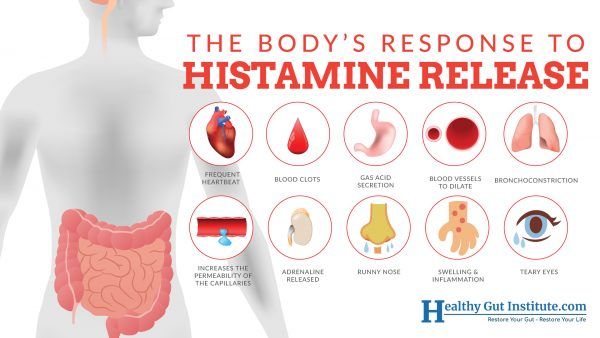
But when someone has a food allergy, their immune system mistakenly treats the proteins in a certain food (or foods) like these foreign invaders, and over-defends the body against these proteins. Their immune system makes special antibodies --- specific IgE antibodies --- that detect the food proteins and help fight them off.
These IgE antibodies trigger symptoms of an allergic reaction whenever the person eats a food they are allergic to. For example, if someone is allergic to peanut, they have IgE antibodies that detect and fight off peanut proteins, and that trigger allergic reaction symptoms (including a possible food allergy rash) whenever they eat peanuts.
Types of Food Allergic Reactions - Mild, Moderate, and Severe
Food allergy reactions can range from mild to severe, and can sometimes be life-threatening. Keep in mind, though, that a mild reaction can sometimes become severe. Also, symptoms of a food allergy reaction can vary from reaction to reaction. So, it’s impossible to predict what symptoms your child will develop each time they have an allergic reaction to food.
So, it’s impossible to predict what symptoms your child will develop each time they have an allergic reaction to food.
Symptoms of a food allergy reaction usually occur seconds to minutes after someone eats a food they’re allergic to, and almost always occur within a few hours of eating the food.
Symptoms of a mild or moderate allergic reaction may include:- A food allergy rash concentrated in one area of the body (red, raised bumps)
- Redness in an area of the skin
- Vomiting
- Swelling of the face, eyes or lips
- Itchiness
- Itchy, watery eyes
- Congestion
- Sneezing
- Some stomach pain
- Some nausea
- Mild coughing
- Worsening eczema
- A food allergy rash that spreads to many areas the body
- Swelling of the tongue
- Swelling or tightness of the throat
- Repeated, significant coughing
- Wheezing/noisy breathing
- Difficulty breathing /shortness of breath
- Change in voice or cry
- Struggling to vocalize
- Difficulty swallowing
- Repeated vomiting
- Pale appearance
- Diarrhea
- Dizziness
- Fainting
- Drop in blood pressure
- Rapid heartbeat
- Loss of consciousness
- Feeling floppy (infants/young children only)
Signs Of Anaphylaxis
When the symptoms of a food allergy reaction are severe and involve more than one organ system, the reaction is classified as anaphylaxis. Anaphylaxis can be life-threatening. Call 911, and give epinephrine (use an Epi-Pen) immediately, if your child shows signs of anaphylaxis.
Anaphylaxis can be life-threatening. Call 911, and give epinephrine (use an Epi-Pen) immediately, if your child shows signs of anaphylaxis.
The National Institute of Allergy and Infectious Diseases (NIAID) provides more information on food allergy symptoms and management:
All About Food Allergy Rashes
A food allergy rash is the most common symptom of a food allergic reaction, especially in babies and children. It is also often the first symptom to appear (but not always). It could appear anywhere on the skin.
What does a food allergy rash look like?
A food allergy rash is raised, very itchy, and usually red or pink. It creates red, raised bumps on the skin. These bumps are usually rounded, and often have red flares around them. They are usually called hives, but are sometimes called wheals, urticaria or nettle rash.
They are usually called hives, but are sometimes called wheals, urticaria or nettle rash.
In people with darker skin, a food allergy rash will also appear as raised, itchy bumps. But often, the bumps do not appear red at all, and instead have the same color as the person’s skin is normally. You also probably won’t see red flares around the bumps. (In some cases, a food allergy rash may still have a subtle red hue, or a darker red hue, when it appears on a person with brown or Black skin.)
Why do food allergies cause a rash?When someone eats a food they’re allergic to, their IgE antibodies detect the proteins from that food. The IgE antibodies prime tissue cells (called mast cells) and blood cells to release a chemical called histamine, and other chemicals, as a way to defend against those proteins.
When the histamine and other chemicals get released, this causes blood vessels to widen (dilate) and become leaky. Fluids get released under the skin as a result, leading to inflammation under the skin. This leads to the raised food allergy rash on the skin.
This leads to the raised food allergy rash on the skin.
Food allergy rashes can be concentrated in one or two areas of the body, or can spread throughout the body.
Places that food allergy rashes often appear include the face, arms, hands, legs, feet, stomach area, and back. But they could appear anywhere on the skin.
Each individual bump (wheal) from the rash can be as small as a few millimeters or as large as several inches across.
But a rash area may be much larger, because food allergy rash usually appears as batches or clusters of bumps. And someone could develop multiple rash areas at a time.
If a food allergy rash is concentrated in one area, the food allergy reaction is mild. But if the rash spreads to many areas of the body, this is a sign of a severe allergic reaction.
How long does a food allergy rash last?Like other food allergy symptoms, a food allergy rash can appear seconds to hours after someone eats a food they're allergic to.
A food allergy rash usually lasts for several hours after food allergy reaction symptoms first appear. Sometimes, it can last for up to 24-48 hours.
Do all food allergy reactions produce a raised rash?Even though food allergy rashes are a common allergy symptom, they may not appear during every food allergy reaction. Sometimes, a food allergy can turn areas of the skin red and/or itchy, but won’t produce the raised food allergy rash (hives).
Also, a food allergy rash is different from the rash that eczema causes. But food allergies can make eczema rashes worse (cause eczema to flare up). Learn the differences between a food allergy rash and an eczema flare-up here.
How to Manage a Food Allergy Rash
If your child develops any food allergy rash (or any other food allergy symptoms), immediately stop feeding them the food that you believe was the cause of the reaction.
The other steps in managing a food allergy rash vary depending on how severe the allergic reaction is.
Managing a Mild Food Allergy Rash
How to manage mild food allergy rashes, concentrated in small clusters on one area of the body?
If a doctor has explicitly recommended a dosage of antihistamine, you can give your child the antihistamine (such as Benadryl or Zyrtec) to treat mild hives. Antihistamine helps stop the release of the histamine that triggered the rash, in the case of a mild or moderate allergic reaction.
If your doctor hasn’t recommended a dosage of antihistamine, call your pediatrician or allergist to alert them about the hives, and ask about next steps.
Either way, continue to monitor your child in case their mild allergic reaction turns severe.
Hydrocortisone cream may also help to relieve the itchiness of the rash, although it won’t make the rash go away.
Managing a Severe Food Allergy RashIf your child develops a significant food allergy rash all over their body, but no other symptoms of a food allergy reaction, call your doctor immediately.
Continue to monitor your child for other symptoms of a food allergy reaction, because if other severe symptoms emerge, your child will have anaphylaxis. If you have epinephrine (an Epi-Pen), give your child an injection. An antihistamine will not be able to stop this severe, widespread rash.
If your child develops a food allergy rash all over their body, and it’s accompanied by severe symptoms in at least one other organ system, your child is experiencing life-threatening anaphylaxis and needs emergency assistance.
Inject epinephrine (an Epi-Pen) immediately, and call 911. Epinephrine is the only medicine that can stop anaphylaxis --- antihistamines cannot stop this severe reaction.
A Note About Food Allergic Reactions and Children
Many people wonder about the differences between food allergy reactions in children vs. adults.
Food allergy rash is one of the most common food allergy symptoms in children and adults. The way it appears in every age group is also largely the same. In fact, food allergies generally cause the same set of symptoms in children as they do in adults.
In fact, food allergies generally cause the same set of symptoms in children as they do in adults.
But even though food allergies cause similar symptoms across all age groups, the most common types of food allergies are different in children vs. adults.
In young children (5 years of age and younger), cow’s milk, egg, and peanut allergies are the most common food allergies. According to one study by Dr. Ruchi Gupta, these three foods are responsible for around 80% of food allergies in young children.
In addition to milk, egg, and peanut allergies, tree nut allergies are also very common in children age 14 and under.
Out of these four food types, peanut and tree nut allergies are most responsible for severe reactions in children, but any food has the potential to cause a severe reaction.
In contrast, the most common food allergy in adults is shellfish allergy, which is largely an adult allergy. Finned fish allergies are another common adult allergy --- and finned fish allergies also tend to develop in adulthood.
Check out our previous article for more on food allergies in children vs. adults.
Food Allergy Testing
If your child develops a rash after they eat a certain food, and it looks similar to the food allergy rash we’ve described above, remember that food allergy testing is the only way to determine whether your child truly has a food allergy. So, it’s best to make an appointment with an allergist for testing.
Food allergies can be diagnosed through three types of tests: a skin prick test, a blood test, and an oral food challenge.
A skin prick test: An allergist pricks your child’s forearm with a needle containing food protein from the suspected problem food. Then, they monitor your child to see if an allergic reaction develops around the area where their skin was pricked.
A blood test: An allergist checks your child’s blood for IgE antibodies that respond to certain food proteins.
An oral food challenge: Your child eats small amounts of the suspected problem food under an allergist’s supervision, to see if they develop an allergic reaction. This is the most accurate way to diagnose a food allergy.
This is the most accurate way to diagnose a food allergy.
Introducing Allergens Safely
New clinical guidelines recommend introducing babies to common allergy-causing foods during their first year of life, as a way to help them safely enjoy these foods in the future.
As the U.S. Department of Agriculture (USDA) recommends in their new dietary guidelines, “Potentially allergenic foods (e.g., peanuts, egg, cow milk products, tree nuts, wheat... and soy) should be introduced when other complementary foods are introduced to an infant’s diet.”
Ready, Set, Food! can help you easily and safely introduce these common allergy-causing foods to baby, following the new clinical guidelines. And since the first two stages of our system fully dissolve into a bottle of breastmilk or formula, you can start introducing your baby to peanut, egg, and milk as early as 4 months of age, even before they’re ready for solids.
All health-related content on this website is for informational purposes only and does not create a doctor-patient relationship. Always seek the advice of your own pediatrician in connection with any questions regarding your baby’s health.
Always seek the advice of your own pediatrician in connection with any questions regarding your baby’s health.
These statements have not been evaluated by the Food and Drug Administration. Products are not intended to diagnose, treat, cure or prevent any disease.
See the FDA Peanut Allergy Qualified Health Claim at the bottom of our homepage.
Food allergy and food intolerance in children
Other related articles: pediatrician, gastroenterologist, allergy
-
4 examinations of the gastrointestinal tract
-
adenovirus infection
-
Adenoids
-
allergic reactions
-
Allergic dermatitis
-
allergic rhinitis
-
Autism
-
Autism (RAS)
-
Bronchitis in children
-
Chickenpox
-
windmill parties
-
coxsackie virus
-
Viral hepatitis
-
Questions to the pediatrician
-
Gastritis
-
Gastroenterology (children's)
-
Flu and SARS
-
Breast milk
-
Dacryocystitis
-
Dermatitis in children
-
Children and allergies
-
Children's painkillers
-
Children's allergist
-
Diet for nursing
-
Dysbacteriosis
-
Dyskinesia
-
Medical examination at 1 year
-
Diphtheria in children
-
For expectant mothers
-
Duodenitis
-
Fatty hepatosis
-
hardening
-
Hardening of children
-
Constipation in children
-
Foreign body of the bronchi
-
Infectious mononucleosis
-
Skin allergy tests
-
Whooping cough
-
Conjunctivitis
-
Measles in children
-
Hives
-
Urticaria in children
-
Rubella in children
-
Gallbladder treatment
-
Bowel treatment
-
Treatment of stomach ulcer
-
Deprive a child
-
false croup
-
Tangerines for children
-
Children's massage
-
Meningococcal infection
-
Incomplete fistula
-
Tumors of the stomach
-
Quincke's edema
-
Quincke's edema in children
-
pancreatitis
-
Pancreatocholangiography
-
Parasitic diseases
-
Pediatrician at home
-
First year of life
-
Baby's first year
-
Nutrition for children 1-3 years old
-
Child nutrition
-
food allergy
-
Defeat the Flu
-
Preparation for vaccination
-
Polyp of the stomach
-
hay fever
-
Pollinosis during pregnancy
-
Food and allergies
-
Complementary foods for children
-
Child's bite
-
Liver problems
-
Digestive problems
-
Walks in the cold
-
Allergen products
-
Teething
-
Rickets in children
-
Child is sick
-
Reflux disease
-
Rhinitis in children
-
Rotavirus infection
-
mumps in children
-
Seasonal hay fever
-
hay fever
-
Scarlet fever in children
-
Sleep with animals
-
Baby care
-
Phytotherapy in children
-
Cholecystitis
-
Cirrhosis of the liver
-
Enteritis
-
Enuresis
-
stomach ulcer
-
peptic ulcer
Article author: Drozdovskaya Nika Vadimovna , gastroenterologist, pediatric gastroenterologist
You all know that when a rash or crusts appear on a child's skin, these are manifestations of atopic dermatitis
This signals that there are highly allergenic foods in the mother's and child's diet or are not suitable for the child.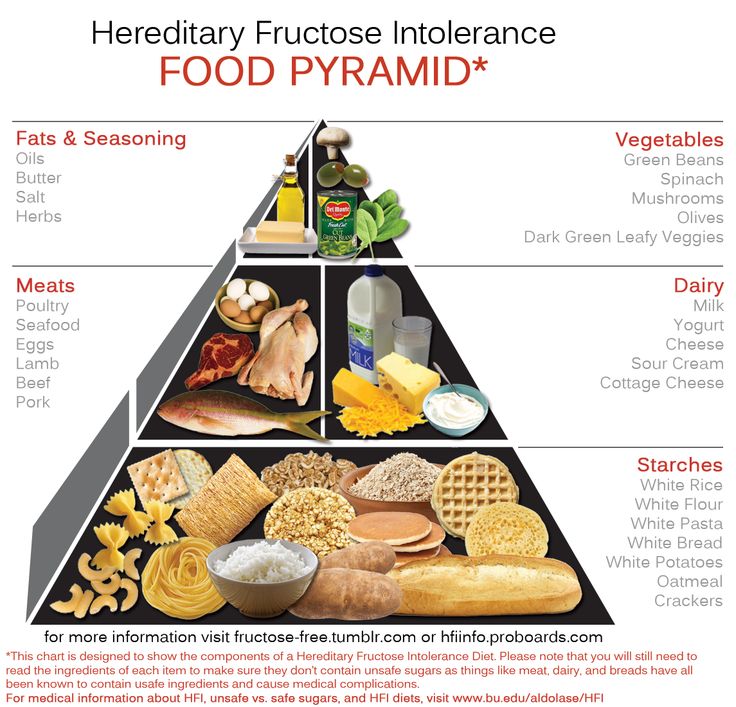
What foods can trigger food allergies in babies?
- High allergen spectrum foods: honey, nuts, chocolate, citrus fruits, red fish, seafood, grapes.
- Products of the 1st group of allergens, a triumvirate of proteins: cow's milk protein, chicken egg protein, cereal protein - gluten.
From the micro-signs on the child's skin you can see: redness around the anus, the appearance of a seborrheic crust on the head, peeling behind the ears. But all these are obvious reactions visible to the eye - there is a hidden, more problematic form of allergy in the form of allergic gastritis and allergic colitis.
- If there is mucus and sometimes blood in the baby's stool, but the baby does not worry and continues to eat well, these are most likely manifestations of allergic colitis.
- If the child begins to cry during feeding and after feeding, then he has prolonged intestinal colic.
- If he periodically refuses to eat, fountain regurgitation occurs, if the baby's skin has signs of allergies - all these conditions can be related to such a disease as a gastrointestinal form of food allergy, that is, a combination of allergic gastritis and allergic colitis.

Why is this form more dangerous than atopic dermatitis?
Absorption occurs in the mucosa of the gastrointestinal tract, and with mucosal edema (against the background of an allergic reaction), absorption slows down or stops altogether, as a result, the child does not receive the substances necessary for life support, growth and development are retarded, which has an extremely negative effect on the construction of all child systems.
At present, such conditions can be easily detected and with the help of rotational and elimination diets, sometimes even without resorting to medication, the situation can be corrected.
Pediatric gastroenterologist will not only make an elimination diet, but will make sure that, despite the therapeutic diet, the child continues to eat well. When compiling a diet, the age of the child, his physical activity, loads are taken into account. Sometimes it is necessary to resort to allergy diagnostics to identify foods that your child does not tolerate or this product causes an allergic reaction in him.
Individual selection of products, the necessary drug therapy, the addition of trace elements and vitamins to the child's diet, a logistical approach to building a child's therapy - this is the way to a complete cure for our children.
Make an appointment with a pediatrician
For more details, consult a qualified specialist at the Semeynaya clinic.
For pediatrician appointment prices or other inquiries please follow the link below:
Tags PediatricianAllergyGastroenterologist
Food allergies in children - symptoms, treatments, diet its individual components. What are its causes, what are the risk factors, and what food to choose in case of an allergic reaction - read in this material.
Food allergy symptoms
The causes of food intolerance are due to the fact that the immune system "incorrectly" recognizes them as potentially dangerous, and produces protective antibodies in excess. Excessively violent reaction leads to the fact that the child develops an allergy to certain types of food. 1.3
Excessively violent reaction leads to the fact that the child develops an allergy to certain types of food. 1.3
Symptoms of food allergy in children are different. But most often, food allergies manifest themselves on the part of the skin - itching, a feeling of tightness and dryness. Local swelling may occur on the skin, a rash (urticaria), redness, blisters may appear. In second place in terms of frequency of manifestation - reactions from the respiratory system. Runny nose, nasal congestion, sore throat, cough of varying intensity. Also, reactions from the organs of the gastrointestinal tract can indicate food allergies. A very young child begins to be disturbed by colic, dyspepsia, stool disorders from diarrhea to constipation. Older children complain of nausea, vomiting, abdominal pain, a feeling of scratching in the throat, behind the sternum.
Do not forget about the general symptoms of food allergies: the child becomes lethargic, capricious, sleeps poorly, does worse in school (or psycho-emotional development), is prone to daytime sleepiness. 2.3
2.3
Causes of food allergies
Newborns and young children, if predisposed, may suffer from allergies due to their physiological characteristics. The fact is that a child is born with an immature gastrointestinal tract, the intestinal walls are permeable to many substances, the enzyme system is still imperfect. Therefore, it is difficult for the body to cope with the digestion of proteins. The body seems to be in a state of constant "combat readiness" and the ingestion of even a small amount of allergens leads to a response from the immune system and the development of a violent allergic reaction. 1.2
In older children, many internal and external conditions become risk factors. For example, heredity - after all, if one of the child's parents suffered from an allergic disease, then with a high degree of probability the child will also be given a tendency to it. Unfavorable environmental factors influence - polluted atmosphere, car exhausts, lack of green plants in cities. Very often, a violation of the immune system in the form of an allergic reaction occurs in children with a labile, mobile psyche, with sharp transitions from friendliness and calmness to crying and back. Finally, bad habits, both in children and mothers during pregnancy, become an important factor. This is incorrectly introduced complementary foods and early introduction of potentially allergenic foods into the child's diet: citrus fruits, nuts, chocolate, berries, honey, and, of course, the habit of children to eat only something tasty (usually unhealthy; chocolate, carbonated drinks, fast food ) 2,3,4
Very often, a violation of the immune system in the form of an allergic reaction occurs in children with a labile, mobile psyche, with sharp transitions from friendliness and calmness to crying and back. Finally, bad habits, both in children and mothers during pregnancy, become an important factor. This is incorrectly introduced complementary foods and early introduction of potentially allergenic foods into the child's diet: citrus fruits, nuts, chocolate, berries, honey, and, of course, the habit of children to eat only something tasty (usually unhealthy; chocolate, carbonated drinks, fast food ) 2,3,4
List of products that provoke allergies
Due to the extreme individuality of the immune system, it is almost impossible to predict its reaction. However, there is a rough list of foods classified into groups depending on their allergenicity - that is, the ability to cause a sharp reaction from the immune system and allergy symptoms. It is important to remember that it is not necessary that any product from the first column will cause a reaction. Like any low allergenic product, in some cases, it can cause an overreaction to it. 2,3,4
Like any low allergenic product, in some cases, it can cause an overreaction to it. 2,3,4
Examples of the most typical exoallergens
| Highly allergenic products | Medium allergenic foods | Low Allergy Products | |
| all citrus fruits, strawberries, strawberries, raspberries, blackberries, pineapples. | peaches, cranberries, lingonberries, cherries, blueberries, black currants. | pears, gooseberries, dried apricots, plums, white currants, apples and pears. | |
| carrots, tomatoes, bell peppers, radishes. | potatoes, beets, peppers, peas, corn. | broccoli, green peas, zucchini, squash, white and cauliflower, cucumbers, pumpkin. | |
| eggs, sausages and sausages, chicken, sea fish. | beef, rabbit, pork. | lamb. | |
whole cow's milk, cheeses, yoghurts with additives. | fermented milk products. | ||
| wheat, rye. | buckwheat, oats, rice, peas, beans. | barley, millet. | |
| coffee, cocoa, chocolate, nuts, honey. | xylitol, fructose | ||
| mushrooms, carbonated drinks, packaged juices. | vegetable oil. |
Diagnosis established
The diagnosis of this allergy, as well as the search for the causes that caused it, requires a careful and serious approach on the part of parents. The younger the child, the easier it is to find foods that cause illness. For this, two conditions must be met.
First - to put a child or mother on a hypoallergenic diet if she is breastfeeding - a detailed nutrition plan will help to make an allergist together with a pediatrician. Please note that during an exacerbation, the diet will be extremely strict, the so-called elimination diet - aimed at removing the allergen and reaction products to it with the complete elimination of potential and cross allergens.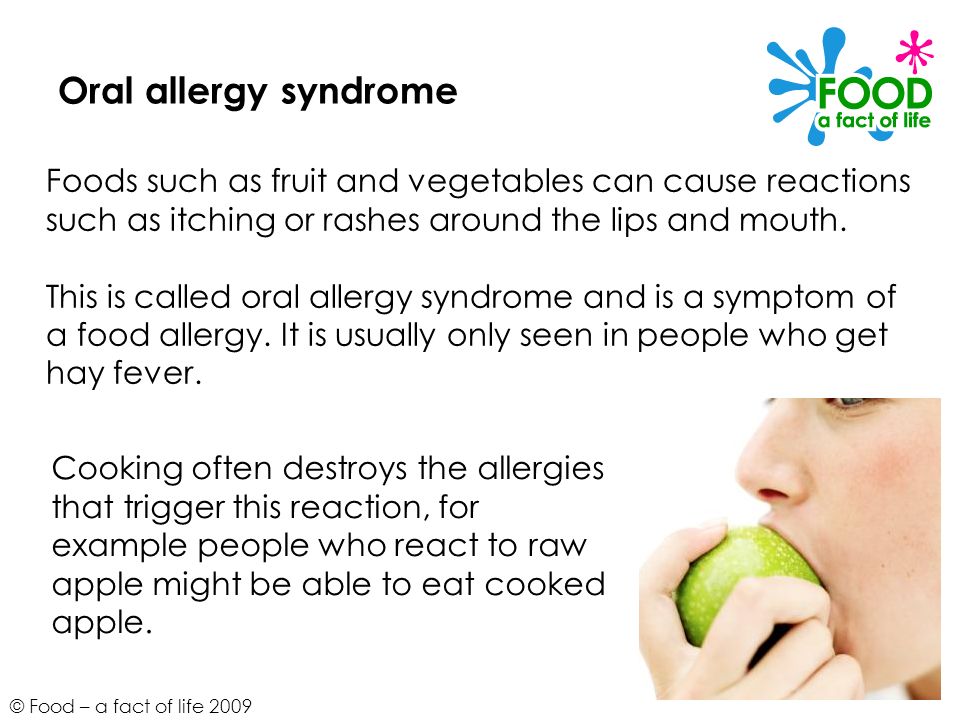 The duration of such a diet is determined by the doctor. When the exacerbation fades, the diet gradually expands due to safe foods. 3.4
The duration of such a diet is determined by the doctor. When the exacerbation fades, the diet gradually expands due to safe foods. 3.4
And the second thing is to start keeping a special food diary in which to record everything that was eaten and drunk by the child during the day, as well as what was cooked and how. At the first sign of an allergic reaction, suspicious foods should be eliminated one at a time (or from the mother's diet if the baby is breastfed). After elimination, within a few days, it is worth observing the reaction, if the manifestations of allergies decrease, then the product is really not suitable for the child - it should be avoided. If the child is very small, then the diary is kept according to the opposite principle: all foods that are introduced as complementary foods are recorded in it. The name of the product, the quantity, the time of eating and the reactions of the body are recorded over the next few days (the attending physician will determine the specific timing of observation). Next, the doctor will need to check and confirm the preliminary diagnosis by conducting special tests and analyzes.
Next, the doctor will need to check and confirm the preliminary diagnosis by conducting special tests and analyzes.
Emergency measures for food allergies
The first step is to assess the severity of food allergies.
For any symptoms, the first step is to avoid contact with a specific familiar allergen or any suspicious food or drink.
If the manifestations of allergy are mild - itching, redness of the skin, then you can give the child an antihistamine, which was previously recommended by the doctor for such cases. In addition, you must also call the local pediatrician and carefully monitor the condition of the child.
If there are obvious or possible signs of deterioration, call an ambulance. Signs that you should pay close attention to and immediately dial 03 include spreading rash and redness, increased itching, fever, drowsiness and lethargy, vomiting and nausea, refusal to drink water, difficulty breathing, loss of consciousness and pallor .